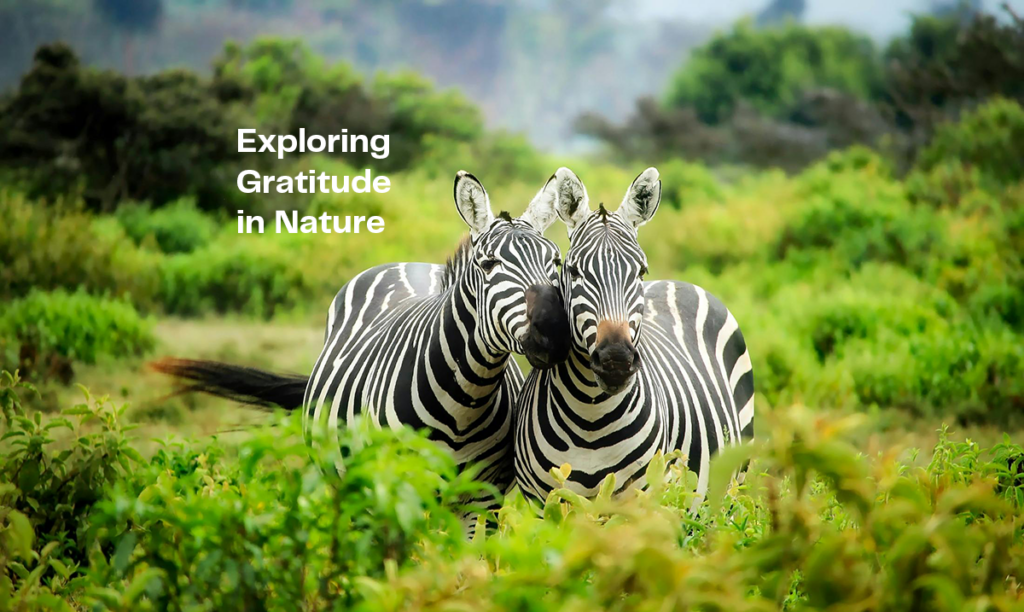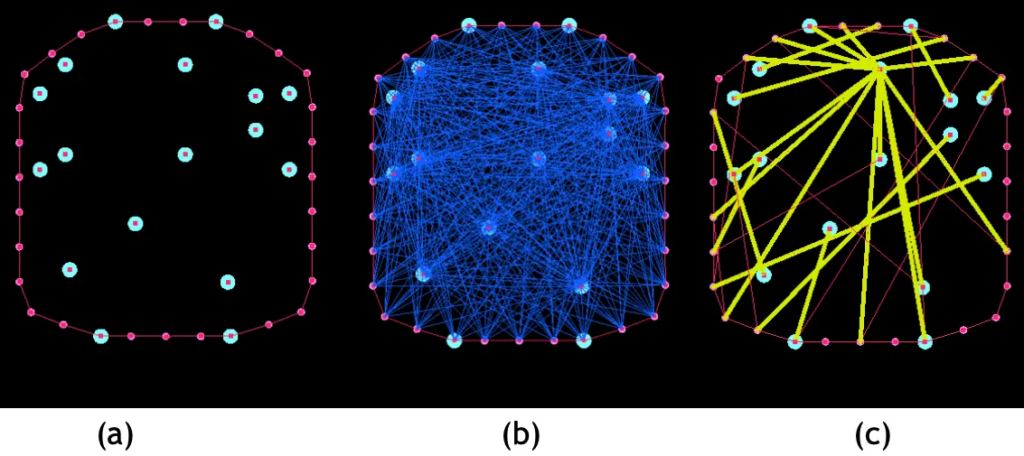
It’s been a consultant for NASA, shot at by police and mistaken for an alien. How slime mold–a brainless, single-celled organism–mapped the dark universe, keeps challenging the top minds to rethink what intelligence even is and has an ability to fill us with wonder beyond the human kind.
No powerful limbs. No aerodynamic wings. So slow, movement can only be noticed with a timelapse video. So why are the experts turning to slime mold for mobility breakthroughs?
When it comes to revolutionizing the auto and robotics industries, we’re surrounded by innovations from electric and hydrogen-fueled vehicles to driverless cars and even flying ones. Also in need of attention: the way cars are designed and made. How can we make better cars with less–less material, less weight, less parts (cars generally have 30,000!), less lead time, less cost, and less energy to move them around? In this pursuit, a promising combination of the slime mold algorithm, additive manufacturing, and generative design could lead to a breakthrough in sustainable mobility manufacturing.
One notable trailblazer in this field is PIX Moving, recently honored as a 2023 Technology Pioneer by the World Economic Forum for their visionary approach to reinventing autonomous mobility and manufacturing. Known for seeing around corners, they are now looking to build the next generation of auto structures with unconventional co-collaborator slime mold at the wheel, starting with the chassis.
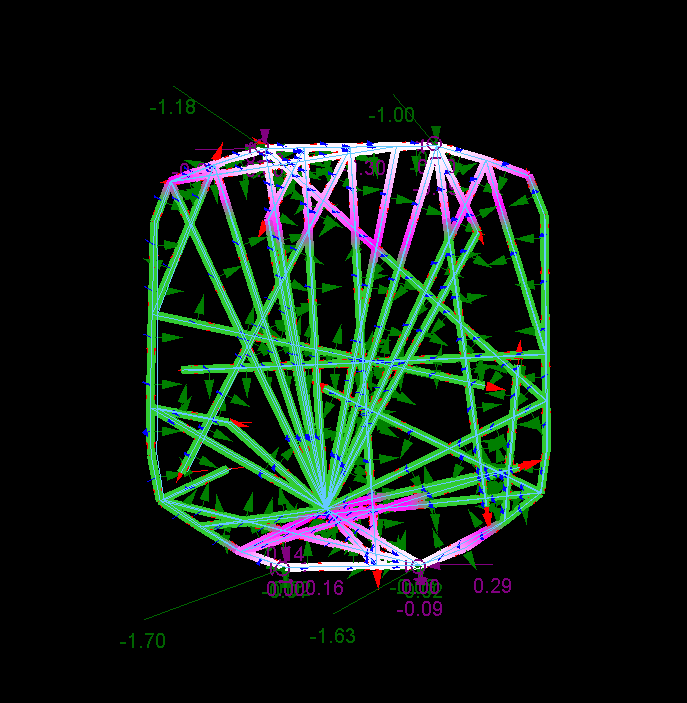
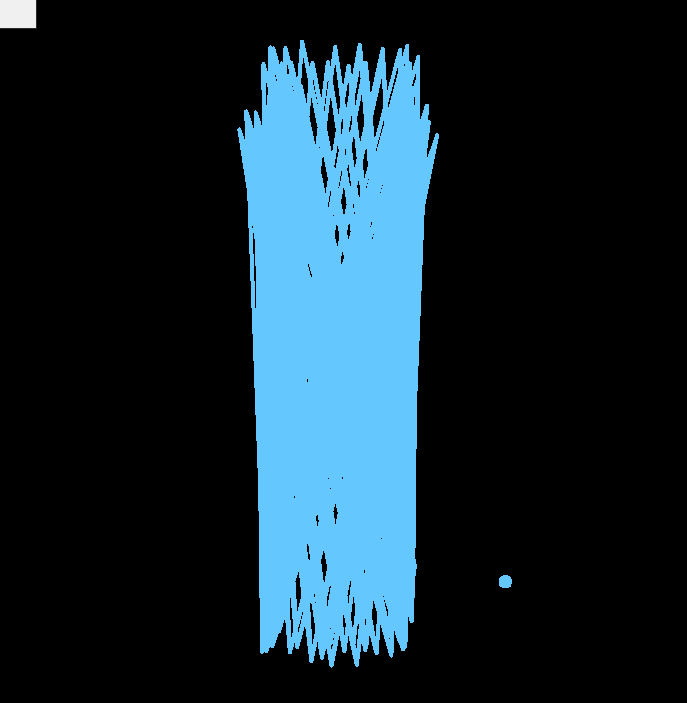
Why is slime mold at the design table?
In slime mold, experts found a new tool that can check two key boxes: 1) identify essential and unnecessary material 2) maintain structural integrity. The step-by-step process or algorithm behind the blob’s unique ability to get from point A to B can be applied to bio-inspired generative design resulting in a structure that is both efficient and robust. Think of this as a survival of the fittest evolutionary process on steroids. In a nutshell, this is the gist: 1.) A set of points are defined (load points, support points) which operate like food locations for hungry slime mold. 2.) Valid connections are made (those are the lines). 3.) Weight is added. 4). Identify the vertex with the highest weight and remove the redundant, non-load bearing lines.
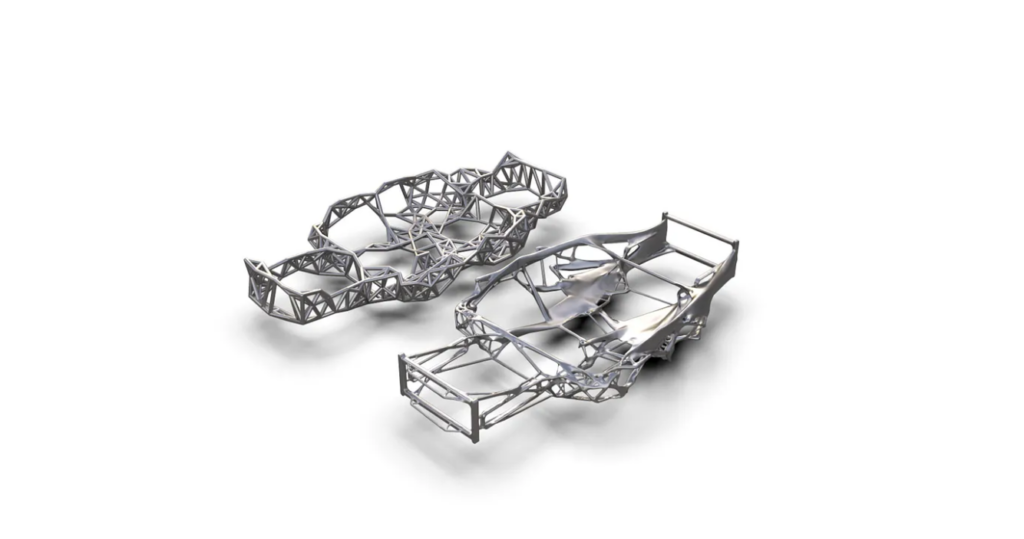
If you’re wondering what generative design is, it’s an iterative, exploratory design process where designers and engineers use software technology that takes key goals and design constraints around a project into consideration, and generates design results that can be adjusted and evolved based on feedback. Generative design provides new solutions and ideas based on existing data.
With bio-inspired generative design, design and production solutions are anchored in nature’s sophisticated algorithms and systems. Innovations are fueled by an R&D lab that’s 3.8 billion years old converging with human ingenuity and ethical AI. When embodying biomimicry’s ethos element, species’ survival tricks aren’t limited to the organism. We all benefit. Especially when innovation can minimize negative impacts on Earth at the scale major industries like mobility can. (For more, AskNature has a fantastic description of bio-inspired generative design software here.)
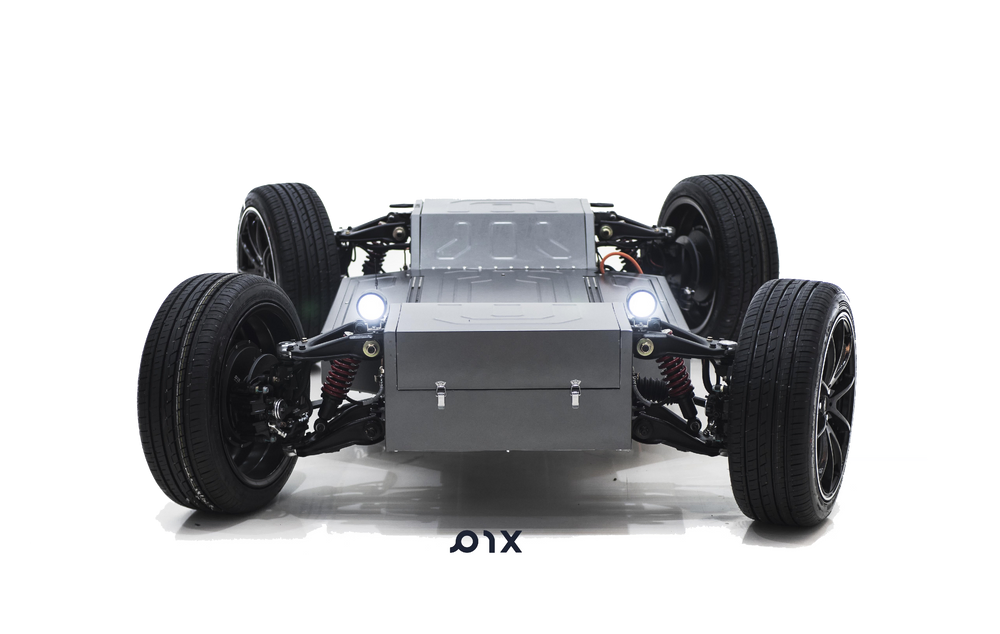
In a wild yellow blob we have new possibilities to clean up our rides from the inside out.
In this case, design engineers looked at the key points and weight bearing needs, and used slime mold’s algorithm to determine what needed to stay and what could go. The optimization resulted in weight and material reductions while maintaining robustness (key since the chassis bears a vehicle’s weight). The recommendations showed that 60-90% fewer car parts is now possible. A traditionally made chassis can result in hundreds of parts, but with generative design (also known as additive manufacturing) a single part is within reach. The team utilized the wire arc additive printing (WAAM) – think large-format 3D printing that involves adding layer by layer – to create the structures, all the while making adjustments to consider the WAAM 3D printing limitations.
We look forward to keeping up with PIX to observe how they scale success–not just to other parts of the car model, but how their vision to rethink the way we move through our communities and entire cities is realized.
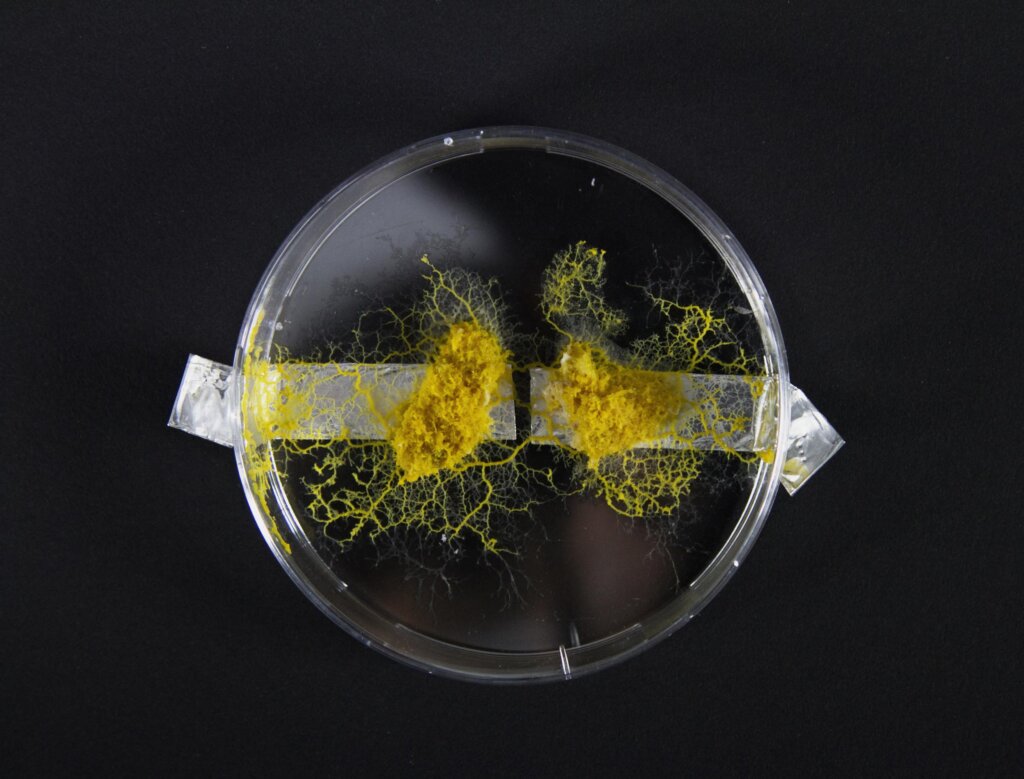
Beyond Manufacturing: A pro’s pathfinder possibilities
The slime mold algorithm for path finding has been a game changer in the development of self-driving cars and robots, enabling them to find the best, safest, quickest, most efficient route, and redirecting and redistributing themselves when necessary if disruptions occur to avoid congestion and accidents on the road. Less time en route would also cut toxic emissions. What if autonomous robots could also help with search-and-rescue missions that are too dangerous for humans – and have the ability to handle complex and changing environments? When time is of the essence it’s highly valuable to lean on robots that can identify the best path (shortest, most direct, least chance for collision, and least vulnerable to falling or injury) for success. Perhaps slime mold’s hyper-efficiency could play a role in helping robots distribute resources during natural disasters or identify optimal evacuation routes ahead of our increasing and more intense natural disasters.
This is the Part 5 of our 8-edition blog series on slime mold by guest writer Katie Losey. She answers your top questions on this fascinating organism and dives into how a brainless, single cell is capable of shaping our futures and blowing our minds. Read part 6 “The Single Cell We Want Planning Our Lives” here.
Feature image: Slime Mold Algorithm | Credit: PIX Moving

About the author
Katie Losey is committed to bridging the gap between humans, nature’s genius, breakthrough innovations and overlooked wonder. She has worked at the intersection of business and conservation for two decades. In her work she has taken on many roles, including marketing director, writer, and strategist for companies in travel, conservation, nonprofit, and energy sectors. In these roles, she was further exposed to the possibilities of innovation inspired by nature from locking eyes with gorillas in Rwanda and swimming alongside orcas in Norway to dodging rats in NYC! Katie has been a member of The Explorers Club since 2015 and serves on their Public Lecture, Film and World Oceans Week Committees. She has been guest writing for the Biomimicry Institute since 2019, and her science writing has been featured in courses at the U of Cambridge, Johns Hopkins U, and on the cover story of the U of Richmond Magazine (her alma mater). She lives in NYC. Connect with Katie on Instagram and LinkedIn.


